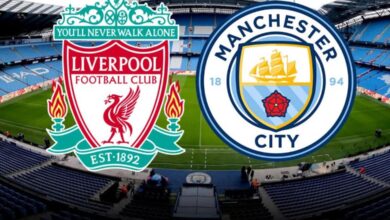Jack Grealish says player Tottenham sold was even faster than Real Madrid’s Vinicius Jr

In a fascinating conversation about the attributes of the perfect footballer, Manchester City star Jack Grealish took fans through a detailed analysis of the qualities that make up the ideal winger. With a reputation for his skill on the ball and his flair in the attacking third, Grealish’s insights into creating the perfect footballer were highly anticipated. One particular part of the discussion focused on the attribute of speed – a key characteristic for any modern winger.
Grealish, known for his dribbling ability and vision, was tasked with selecting the best qualities from various top players around the world. He was asked to build a “Frankenstein” of a footballer, a player with the combined best attributes of his peers. It’s a common exercise among football players and fans alike to imagine such a hybrid footballer, mixing the strengths of various players into one. From the vision and passing ability of David Beckham to the dribbling wizardry of Neymar, Grealish carefully picked the traits he admired the most from his contemporaries.
When it came to speed, however, Grealish was torn between several contenders. Speed has always been a vital asset for any winger, but the modern game has seen an incredible number of players capable of blistering runs down the flanks. From current stars like Kylian Mbappé to legendary figures like Theo Walcott, the list of speedsters is long. Despite the competition, Grealish ultimately selected a former Tottenham Hotspur star, Gareth Bale, as the fastest player he had ever seen.
Grealish’s choice may raise eyebrows, especially with players like Mbappé and Vinicius Jr. being among the fastest players in the game today. However, there is little denying Bale’s reputation as one of the fastest players to ever grace a football pitch. Grealish did acknowledge the speed of players like Mbappé and Vinicius Jr. but explained that Bale’s pace, coupled with his strength and skill, made him the ideal choice for the “perfect” winger
Speed is undoubtedly one of the most important attributes for a winger, and it has become even more significant in the modern era. In a time when the game is more dynamic and fast-paced than ever, having a player who can beat defenders with sheer pace can be a game-changer. With the development of tactical play and improved fitness regimes, the role of wingers has evolved. Today, they are not just expected to cross the ball or provide an assist – they are integral to the team’s attacking dynamics. They must possess the ability to stretch defenses, beat defenders one-on-one, and make runs behind the opposition’s backline.
As a result, speed is an invaluable asset for any winger. Historically, players like George Best, Johan Cruyff, and Ryan Giggs were known for their dribbling and flair, but the evolution of football has placed a premium on pace. In today’s game, wingers are expected to possess a combination of skills: dribbling, crossing, vision, and, most importantly, the ability to accelerate past defenders in the blink of an eye.
In the Premier League, speed has been a defining feature of some of the league’s most iconic wingers. From the aforementioned Theo Walcott to the likes of Raheem Sterling, Mohamed Salah, and Sadio Mané, pace is often the foundation of their playing style. In this context, Grealish’s decision to select Bale as the fastest player is a reflection of the Welshman’s legendary status in the world of football
Gareth Bale’s career is one that is synonymous with incredible speed, and it’s a quality that set him apart even in a league filled with world-class athletes. At his peak, Bale was often described as one of the fastest players in the world, and his ability to leave defenders in his wake made him a fearsome presence on the left wing. His speed was not just a product of his physical attributes; it was a combination of his explosive acceleration, his powerful stride, and his relentless work ethic.
Bale’s pace first became evident during his time at Southampton, but it truly exploded during his years at Tottenham Hotspur. Initially, a left-back, Bale’s transition to a winger allowed him to fully utilize his speed and attacking potential. Under the guidance of Harry Redknapp, Bale became one of the most dangerous wingers in the world. His performances in the Champions League, especially during Tottenham’s 2010-11 campaign, made him a household name. His remarkable pace was on full display when he tore apart the likes of Inter Milan’s defense, scoring a famous hat-trick at the San Siro in 2010.
Bale’s speed was not just about raw sprinting ability; it was about how he used it in combination with his dribbling, decision-making, and finishing. He would receive the ball wide on the left, accelerate down the wing, and often glide past defenders as though they were standing still. His ability to cover ground quickly, combined with his technical skill, made him an unpredictable and devastating player on the counterattack.
Bale’s transition to Real Madrid only enhanced his legacy as one of the fastest players in the world. Playing alongside some of the world’s best players, Bale’s pace became an invaluable asset in the Spanish side’s attacking setup. Whether it was his memorable run against Barcelona in the Copa del Rey final or his blistering runs in the Champions League, Bale continued to show why he was one of the most explosive players of his generation.
Bale’s speed was not just a product of his natural talent but also his physical attributes. Standing at 6 feet 1 inch (1.85 meters), Bale’s height gave him an advantage in terms of stride length. A tall player can often cover more ground with each step, and this gave Bale a significant edge when it came to long sprints. His stride length, coupled with his explosive acceleration, made him a terrifying prospect for defenders.
Acceleration is key to a player’s speed, and Bale’s ability to go from zero to top speed in a matter of seconds was a hallmark of his game. Studies on sprinting suggest that players who can reach their top speed quickly have a huge advantage in one-on-one situations. This was something Bale mastered during his prime, whether he was chasing down a loose ball or exploiting space behind a high defensive line.
According to The Speeds Database, Bale’s top recorded speed is 36.9 km/h (22.94 mph), which ranks him among the fastest players in football history. This number places him just behind players like Micky van de Ven, who holds the record at 37.38 km/h, and Kylian Mbappé, who has reached 36.7 km/h. While these numbers are impressive, it’s important to note that speed is not just about the fastest possible sprint but also how effectively a player can use their pace in different situations. Bale’s ability to maintain his speed while controlling the ball was what made him so dangerous.
Tottenham Hotspur has long been a club known for its speedy players. From the early days of English football to the present, the club has produced some of the fastest and most electrifying wingers the game has seen. Bale, of course, is the most iconic example, but he is by no means the only one. The history of speed at Tottenham is filled with names that have made their mark in the Premier League and beyond.
One of the earliest examples is Aaron Lennon. A diminutive winger with blistering pace, Lennon was a key figure for Spurs in the mid-2000s. His speed was his most defining characteristic, and he terrorized defenders with his ability to stretch the play and make darting runs down the right wing. Although Lennon wasn’t as tall as Bale, his low center of gravity and quick acceleration made him an extremely difficult player to deal with.
In more recent years, Son Heung-min has become synonymous with pace at Tottenham. The South Korean forward is known for his lightning-fast sprints and clinical finishing, and his ability to get in behind defenses has been a constant threat for Spurs. Son’s pace, combined with his intelligence and composure, has made him one of the Premier League’s best wingers, and he is often compared to the likes of Bale due to his similar style of play.
Micky van de Ven, as mentioned earlier, is another player currently at Tottenham who possesses incredible pace. The Dutch defender has been clocked at a top speed of 37.38 km/h, making him the fastest player on record in The Speeds Database. Van de Ven’s speed has been a key asset for Spurs, and his ability to recover quickly and cover large areas of the pitch has made him one of the standout defenders in the Premier League.
While Bale’s pace was certainly impressive, he is by no means the only player to have made an impact with his speed. Other players, like Mbappé, Adama Traoré, and Mykhaylo Mudryk, have also become known for their blistering runs.
Kylian Mbappé is often considered the fastest player in world football today. His acceleration and ability to maintain top speed over long distances have made him a nightmare for defenders. Mbappé’s top speed of 36.7 km/h is just shy of Bale’s, but the Frenchman’s combination of pace and technical ability makes him one of the best players in the world.
Adama Traoré is another player who has made a name for himself thanks to his speed. Known for his powerful physique and explosive pace, Traoré is capable of running at defenders and using his speed to bulldoze his way through challenges. His top speed of 36.6 km/h places him alongside some of the fastest players in the game, and while he may not have Bale’s finesse, his raw power and pace are a formidable force.
Similarly, Mykhaylo Mudryk, the Ukrainian winger currently playing for Chelsea, has also been clocked at 36.6 km/h. His ability to accelerate rapidly and create space with his pace has made him one of the brightest young talents in world football.
Jack Grealish’s choice of Gareth Bale as the fastest winger in football is a fitting tribute to the Welshman’s remarkable career. Bale’s pace, combined with his technical ability and football intelligence, made him one of the most dangerous wingers in the world during his peak years. While other players like Mbappé and Vinicius Jr. are also incredibly fast, Bale’s legacy as one of the fastest players to ever play the game is firmly cemented.
From his early days at Tottenham to his iconic years at Real Madrid, Bale’s speed was one of the key elements that made him such a devastating player. His combination of pace, power, and skill set him apart from other players and made him a joy to watch. With the rise of other speedsters in modern football, Bale’s legacy will continue to be remembered as one of the greatest examples of raw speed in the game.
As football continues to evolve, the importance of speed in the game remains ever-present. From wingers to strikers and defenders, pace is a game-changer, and players like Bale have shown just how transformative this attribute can be. For Grealish, choosing Bale as the fastest player is a recognition of the Welshman’s unparalleled ability to outrun defenders and change the course of a match with a single burst of speed.















